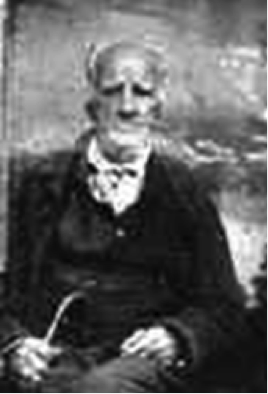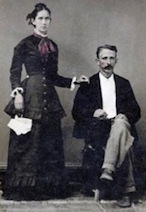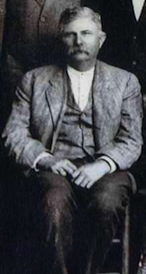How the Smith-Harris Century Ranch Got Its Start in Jack County
|
The seeds of the Smith-Harris Century Ranch took root in the dust of Reconstruction and martial law in Jack County. Jack County is in the northern part of the Texas Cross Timbers, an expanse of oak-covered hills and grassy prairieland that stretches north from the Hill Country near Austin past the Brazos and Trinity rivers toward the Red River.
Records from the Texas Land Commission confirm that in 1859, Joseph Henson claimed a 5,000-acre headright grant. The Texas Legislature had only recently carved Jack County out of the southwestern edge of Cooke County and proclaimed the area open for settlement. Joseph Henson earned the grant in service as a militia captain for the state of Texas. In 1859, he was age 58 and ready for a quieter life.
|
|
Half the 5,000 acres went to surveyor Moses Evans as compensation for braving the dangers of Commancheria to complete the work. Evans claimed his portion in Brazoria County, leaving Henson a 2,500-acre stake in Jack County along modern-day Hwy. 380, just north of the intersection with Hwy. 199. The flat prairieland sits about three miles east of Jacksboro with hills to the west and north. Carroll Creek cuts into the property from the southwest. For a few years before the war (1858-1861) the Butterfield Overland Mail Stage rumbled by a couple of times a week on the road between Bridgeport and Ft. Belnap along the 2,795-mile route that connected St. Louis and San Francisco.
In time Henson and his partners established a thriving business providing holding pens and a railhead for cattlemen. Cattle could be shipped east about 70 miles to Fort Worth, or driven north about 50 miles toward Bowie and the Chisolm Trail, or headed west toward the Goodnight-Loving Trail
|

Joseph Henson
|
Henson and his wife, Mary, had a large and growing extended family. Two sons had established homesteads in Jack County before their parents moved here. But one of their older daughters, Phoebe, had stayed behind on her own farm when her family left Leon County’s Ferguson Prairie.
Phoebe lost her first husband. Simpson Lauderdale in 1856, and in 1959 remarried a younger farmhand, David Smith. Their son Alfred Granderson Smith was born in December 1859. Before Alfred’s second birthday, David Smith mustered with General Hood’s forces in Waco and marched off to serve as a chaplain in the Confederate army. Before Alfred’s third birthday, his mother was dead.
Joseph Henson brought Alfred and Phoebe’s children from her first marriage home to live on Carroll Creek. In 1865 Alfred’s father, David Smith, walked home to Texas after Appomattox. David soon remarried and but young Alfred remained in the care of his maternal grandparents.
|

Phoebe and David Smith
|
Life in North Texas was anything but quiet and settled. One of Alfred’s uncles gave this account to an early Jack County historian:
Sister and Alfred were in the cow pen, milking, early in the morning. Sister, then a good big girl, 15 or 16 years old, Alfred 8—Sister milking, Alfred holding the calf off—they heard horses. Alfred thought they were soldiers. Sister looked up and said, “They are Indians! Run!” She ran to the house and reported; Alfred stayed where he was. Grandpa (Joseph) came to Alfred. A little later A.J. Henson and a Negro man whom Grandpa had raised also came to them. Grandpa told them to go back and load the guns. This they did and returned at once and began shooting at the Indians. One Indian came closer than the others, Grandpa snapped his gun at the Indian—had failed to load --- worked the lever of his gun, fired, the Indian fell from his horse, dead. His horse stopped in a jump or two, the Indians rushed up around the dead Indian, sheltering themselves by lying on the opposite side of their horses from us, picked up the dead Indian, placed him on his horse and rode away. The fight was over.
In Reconstruction Texas two of Alfred’s aunts would be widowed by scalpings. His uncle Joseph T. Henson (Phoebe’s brother) would shoot a Union soldier and flee the state, only to return home and be acquitted of murder charges once martial law ended.
High property taxes of Reconstruction, his son’s legal problems, and pains of old wounds took their toll. Less than three decades after establishing his ranch, with most of his land in the hands of carpetbaggers, Joseph Henson pulled up stakes and moved to town.
|

Alfred Grandseron Smith
|
By age 12 young Alfred had struck out on his own, hiring himself out as a hand to ranchers west of Jacksboro. Jesse Graves must have been one of those ranchers, because in 1880 Alfred married Jesse’s daughter Elizabeth “Eliza” Graves. They began building a ranch of their own six miles west of Jacksboro near what is now Hwy. 281.
In 1989, Rhonda’s mother, Betty Smith Harris, documented a 1889 deed from Alfred and Eliza’s holdings and successfully enrolled her ranch in the Texas Family Land Heritage program. The program recognizes farms and ranches in continuous operation by the same family for 100 years or more.
Alfred’s youngest son M. L. “Boss” Smith was Betty’s father. Boss and many of his siblings left the Jack County ranch to settle about 50 miles way in Wichita County during the oil boom of the early 20th Century. But Boss never let go of the land he inherited from his father. He ran cattle and bought up land parcels from his brothers, sisters, and neighbors. The Smith-Harris Century Ranch of today contains much but not all of the original acreage amassed by Alfred and Eliza.
|
|